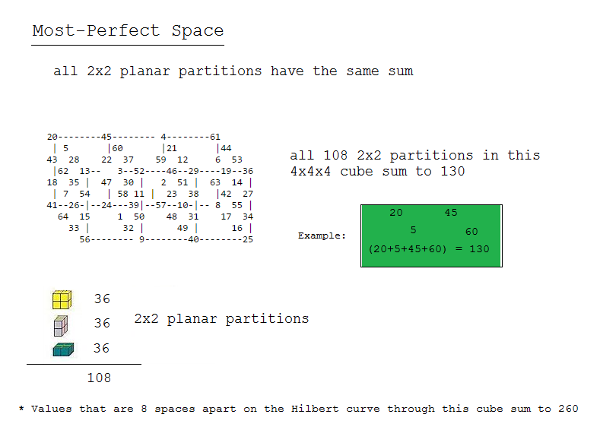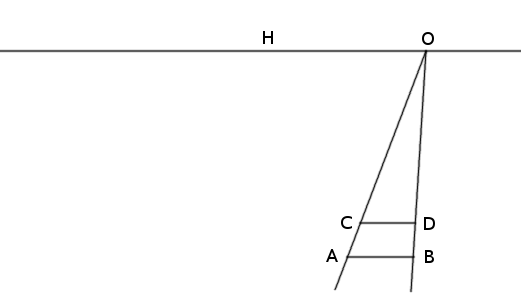
AB and CD are consecutive ties across a pair of railroad tracks that appear to meet at O on the horizon, H. If the ties are parallel to the horizon and are equally spaced along the tracks, how can we draw the next tie in this perspective figure?

AB and CD are consecutive ties across a pair of railroad tracks that appear to meet at O on the horizon, H. If the ties are parallel to the horizon and are equally spaced along the tracks, how can we draw the next tie in this perspective figure?
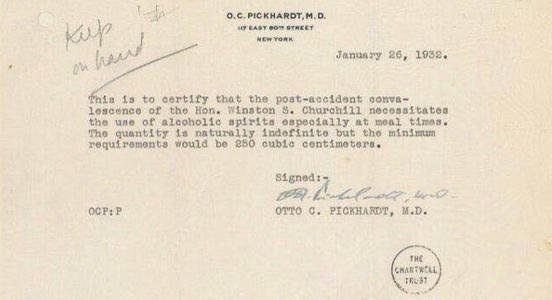
After being struck by a car in January 1932, Winston Churchill found himself laid up in New York at the height of Prohibition. He convinced his attending physician to write the prescription above.
“I neither want it [brandy] nor need it,” he once said, “but I should think it pretty hazardous to interfere with the ineradicable habit of a lifetime.”
As military and computer technology exploded in the early 1960s, Raytheon compiled a helpful list of 400 “space-age” abbreviations:
CHAMPION — Compatible Hardware And Milestone Program for Integrating Organizational Needs
COED — Computer Operated Electronic Display
DASTARD — Destroyer Anti-Submarine Transportable ARray Detector
PIPER — Pulsed Intense Plasma for Exploratory Research
It published the list in a booklet titled ABbreviations and Related ACronyms Associated with Defense, Astronautics, Business, and RAdio-electronics — or ABRACADABRA for short.
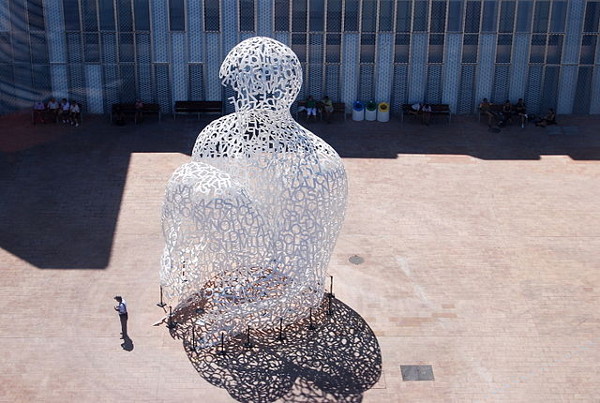
Spanish artist Jaume Plensa created El Alma del Ebro, above, for a 2008 exposition in Zaragoza on water and sustainable development. (The Ebro River passes through the city.) Visitors can pass in and out of the 11-meter seated figure, but no one has discovered a meaning in the letters that compose it.
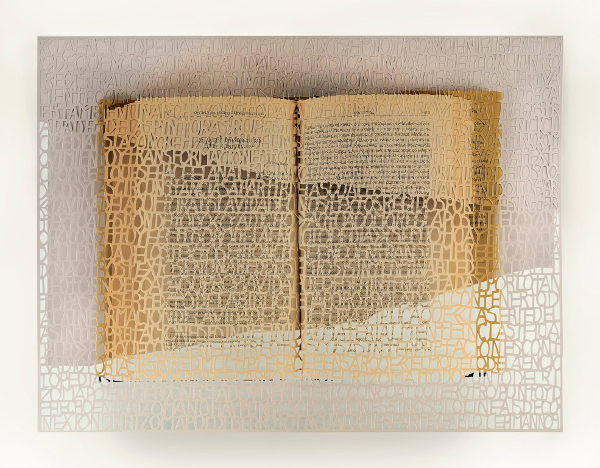
Argentine artist Pablo Lehmann cuts words out of (and into) paper and fabric — he spent two years fashioning an entire apartment out of his favorite philosophy books. Reading and Interpretation VIII, above, is a photographic print of Jorge Luis Borges’ “The Garden of Forking Paths” into which Lehmann has cut his own text — a meditation on “the concept of ‘text.'”

In 2011, Buenos Aires native Marta Minujin built a seven-story “Tower of Babel” on a public street to celebrate the city’s designation as a “world book capital.” The tower, 82 feet tall, was made of 30,000 books donated by readers, libraries, and 50 embassies. They were given away to the public after the exhibition.
California high school student Derek Hollowood created this function after considering recurrence relations:
h(-10) = 0.987654321 h(-9) = 0.87654321 h(-8) = 0.7654321 h(-7) = 0.654321 h(-6) = 0.54321 h(-5) = 0.4321 h(-4) = 0.321 h(-3) = 0.21 h(-2) = 0.1 h(-1) = 0 h(0) = 0 h(1) = 1 h(2) = 12 h(3) = 123 h(4) = 1234 h(5) = 12345 h(6) = 123456 h(7) = 1234567 h(8) = 12345678 h(9) = 123456789
(Thanks to Chris Smith for the tip.)

When I was 10 years old, a time machine appeared in my bedroom and my older self emerged and tried to kill me. He failed, of course, as his own existence must have shown him he would. But ever since I’ve wondered: This means that someday I myself must travel back to that bedroom and try to kill my younger self. And why would I ever do that?
This is not a logical or a metaphysical problem, but a psychological one. I can imagine being someday so depressed or ashamed or angry at myself that I’m motivated to travel back and try to erase my own existence. But I already know that the gun will jam. What earthly reason, then, could I have to go through the motions of a failed assassination? (Certainly we can imagine cases of amnesia, mistaken identity, etc., where such an action would make sense, but we’re interested in the basic straightforward case in which a time traveler interacts with his younger self — which surely would happen if time travel were possible.)
It seems that I must be motivated, somehow, in order for the appointment to take place, and yet the motivation seems to have no source. “In the present case, we have actions coming from nowhere, in the sense that no one decides, in the usual way, to perform them (or decides that they should be performed), and yet they are performed nonetheless,” writes University of Sydney philosopher Nicholas J.J. Smith. “The psychology of self-interaction is essentially different from that of interaction with others — because the former, but not the latter, involves the problem of agents knowing what they will decide to do, before they decide to do it.”
(Nicholas J.J. Smith, “Why Would Time Travelers Try to Kill Their Younger Selves?”, The Monist 88:3 [July 2005], 388-395.)
In 2006, Florida amended its constitution to say that any future amendments must have the approval of 60 percent of the voters.
Square wheels work fine if the road accommodates them — in this case, the road must be a series of catenaries suited to the size of the square. (A catenary is the shape that a cable assumes when suspended by its ends.)
Macalester College mathematician Stan Wagon designed a square-wheeled tricycle in 2004, and physics students at Texas A&M built a companion in 2007 (below).

In this week’s episode of the Futility Closet podcast we’ll take a tour through some oddities and unanswered questions from our research, including whether a spider saved Frederick the Great’s life, a statue with the wrong face, and a spectacularly disaster-prone oil tanker.
We’ll also revisit the lost soldiers of World War I and puzzle over some curiously lethal ship cargo.
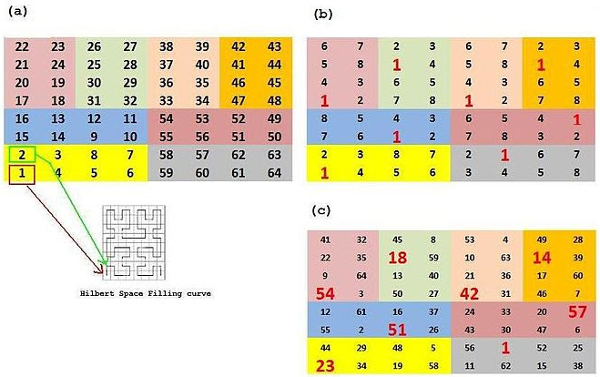
Craig Knecht, whose “terraformed” magic squares we explored in 2013, has begun to experiment with applying “magic” properties to David Hilbert’s space-filling curve.
The Hilbert curve finds its way to every cell in the square above by following the pattern shown at the lower left. Knecht divided that path into eight-cell segments, as shown in (a), and then sought solutions in which each colored eight-cell panel produced the magic sum of 260 while each of the eight ordinal positions across the eight panels did so as well. For example, in (b), a large red digit 1 marks the “first” position in each panel; the hope was to find values for these eight cells that would sum to 260, and likewise for all the “second” cells, the “third” ones, and so on.
The result, shown in (c), is a “most-perfect” magic square: Each colored panel sums to 260, and every set of cells that are 8 spaces apart on the Hilbert curve also sum to 260.
The next step was to apply this idea in three dimensions, and recently Knecht made the breakthrough shown below — a 4×4×4 “most perfect” number cube. The 64 numbers in the cube can be broken into 36 2×2 subsquares in each dimension, as shown. In all 108 of these subsquares, the four constituent numbers total 130. And as with the two-dimensional square above, a Hilbert curve can be drawn through the cube that visits each cell once, and cells that are eight cells apart on this curve sum to 260.
One of Knecht’s correspondents pointed out that the cube is even magicker than he had supposed: The “wraparound” subsquares (for example, 5, 28, 44, and 53 on the top of the cube) also sum to 130, as does each set of four corners, making a total of 192 2×2 subsquares that sum to 130.
“So in summary … making the Hilbert space-filling curve path have this magic property of values 8 spaces summing to the magic constant + this 2×2 planar criteria produces a very interesting cube!”
